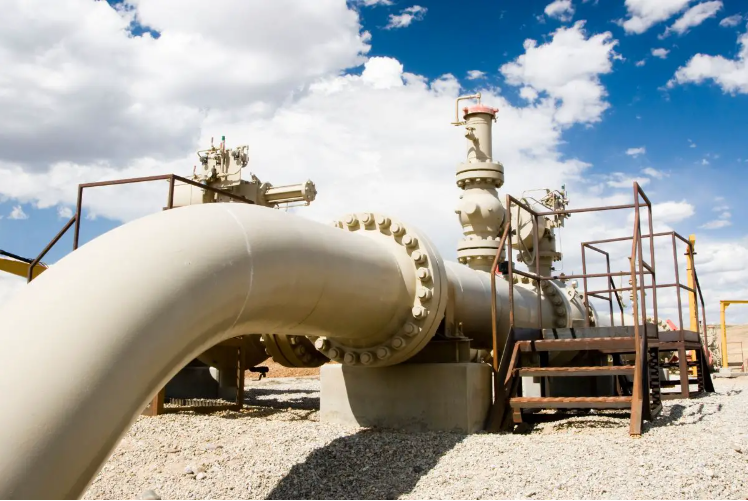A project in Germany led by two European gas transmission system operators (TSOs) has now completed a successful test of a blend of up to 25 percent hydrogen fuel on a Titan 130 SoLoNOx Solar Turbine gas turbine which functions as a major natural gas compressor mover in the country.
This successful test has demonstrated an important achievement for the transmission sector in Europe.
As Europe aims to decarbonize and diversify its energy sector, it requires new options for mechanically compressing gas used at various gas pipeline stages ranging from extraction to distribution to the end user.
The project ran for six weeks and was led by GRTgaz Deutschland, OGE, and Solar Turbines. GRTgaz Deutschland already operates a gas transmission system spanning 1,200 kilometers in southern Germany. OGE is the leading TSO in Europe. Solar Turbines is a Caterpillar-owned gas turbine manufacturer based in California.
The goal of the collaboration was to test a Titan 130 SoLoNOx gas turbine using hydrogen fuel blends. That gas turbine drives a gas compressor at the Waidhaus, Bavaria MEGAL compressor station, which is jointly owned by OGE and GRTgaz Deutschland.
The successful hydrogen fuel test offers a new way to reduce the pipeline’s carbon footprint.
The compressor used in the hydrogen fuel test serves the MEGAL natural gas pipeline system. That system provides a cross-border, bi-directional point in Waidhaus between Germany and the Czech Republic.

“Preparations for the project started two years ago when a mobile blending plant the size of a 40-foot ISO shipping container and a temporary hydrogen supply were set up for the tests,” said a February statement released by the companies participating in the collaboration. “The entire configuration was acceptance tested by an independent expert in accordance with the rules and regulations applicable to public energy supply and approved for operation. For these tests, it was crucial not to compromise the safety and availability of the compressor station.”
Preparing the gas grid infrastructure for a rapidly rising demand for hydrogen fuel.
Among the reasons that this project’s success was considered to be as important as it was, is that a natural gas compressor prime mover is a core component of what is necessary to drive the compressor in the first place.
Though electric motors and reciprocating engines can occasionally be used as compressor prime movers, gas turbines are notably more common for a series of reasons. Mainly, they usually cost substantially less to operate than their alternatives. Moreover, they provide reliability, and their emissions are fairly low. On the other hand, gas turbines are typically powered by natural gas withdrawn from the pipeline system.
Steps for the future
Gas grids, including at the TSO and distribution system operator (DSO) levels, will be required to take the steps necessary to comply with decarbonization and with what is expected to be a rapidly rising demand for hydrogen fuel, according to the European Network of Transmission System Operators for Gas (ENTSOG) industry group.
In 2022, the ENTSOG pointed out that blending percentages as high as 2 percent of H2 volume into natural gas was already achievable. That said, blending H2 volumes as high as 20 percent may be necessary over the mid-term, depending on conditions on a regional and national level, in addition to requirements, customer needs, and grid topology.
“In the long run, most sectors will retrofit to dedicated hydrogen systems. Yet, this may not be possible for specific industrial processes e.g., the production of chemicals, which are largely dependent on the methane molecule,” said the ENTSOG. “As a consequence, methane networks using natural gas, biomethane and/or syngas depending on the region, will also play a role in the future.”